The prophet Daniel foretells that in addition to being a persecuting power, this entity would seek to set itself up above God by claiming to change God’s law, particularly His Sabbath commandment. That power is thus referred to: “And he shall speak great words against the most High, and shall wear out the saints of the most High, and think to change times and laws: and they shall be given into his hand until a time and times and the dividing of time” (Daniel 7:25). The Bible further teaches that the beast will have a ‘mark’ that will affect the survival of every person on planet earth (Revelation 13:15-17).
But who is the beast and what is its mark? More importantly, however, is the question of how the beast and its mark relate to God and His seal. Whatever they are, the beast and its mark are in contradiction to God and His seal of authority, His blessed Sabbath-day: “For in six days the Lord made heaven and earth, the sea, and all that in them is, and rested the seventh day: wherefore the Lord blessed the sabbath day, and hallowed it” (Exodus 20:11; Revelation 14:7).
The Bible also makes it abundantly plain, that the consequences for receiving the mark of the beast are dire and deadly “And the third angel followed them, saying with a loud voice, If any man worship the beast and his image, and receive his mark in his forehead, or in his hand… The same shall drink of the wine of the wrath of God, which is poured out without mixture into the cup of his indignation; and he shall be tormented with fire and brimstone in the presence of the holy angels, and in the presence of the Lamb” (Revelation 14:9-10; Revelation 16:2).
The Book of Revelation, the summation of salvation history, presents a portrait of contrast and conflict. It reveals the church of God versus the bride of anti-Christ. John reports on the war in heaven and previews eternal peace on earth. He speaks of those who will be saved and those who will be lost. The law of God is uplifted and the traditions of man is condemned. The Seal of God is presented in contrast to the Mark of the Beast. We see the harvest of God triumphing over the reaping of the tares for eternal destruction. We hear the call of the anti-Christ to follow him in contradiction to the loving appeal of Creator God to worship Him.
Further, the prophet Daniel tells us what a beast is. In a vision from God whilst in Babylonian captivity, Daniel is shown the history of the world from his time down through the ages unto the second coming of Jesus Christ. The nations, which will be successive, dominating world powers, were represented to Daniel as “beasts.” Each would have a significant impact on God’s people and His plan of redemption for men’s souls. God’s prophet relates, “These great beasts, which are four, are four kings, which shall arise out of the earth” (Daniel 7:17). He emphasized, “The fourth beast shall be the fourth kingdom upon the earth, which shall be diverse from all kingdoms, and shall devour the whole earth, and shall tread it down and break it into pieces” (Daniel 7:23).
He then gives us further insight: “Daniel spake and said, I saw in my vision by night, and behold the four winds of the heaven strove upon the great sea… and four great beasts came up from the sea diverse one from the other” (Daniel 7:2-3). He is thus describing the warring and strife amongst nations as they struggle against each other for political and military domination.
The first beast (nation) that Daniel mentions is a lion with eagles’ wings. He relates, “The first was like a lion and had eagles wings” (Daniel 7:4). In prophesying about Judah’s captivity into Babylon, the prophet Jeremiah declared, “And this whole land shall be a desolation and an astonishment: and these nations shall serve the king of Babylon seventy years” (Jeremiah 25:11). The first beast of Daniel’s dream identifies unquestionably the nation of Babylon into which he and the people of Israel were taken into captivity in the year 606 BC. Daniel then sees another beast (nation) coming at the first beast. “And behold another beast, a second like unto a bear” (Daniel 7:5).
The scribe Ezra reports, “Now in the first year of Cyrus king of Persia, that the word of the Lord by the mouth of Jeremiah might be fulfilled, the Lord stirred up the Spirit of Cyrus, king of Persia, that he made a proclamation throughout all his kingdom, and put it also in writing saying: Thus saith Cyrus, king of Persia: ‘The Lord God of heaven hath given me all the kingdoms of the earth: and he hath charged me to build Him an house at Jerusalem, which is at Judah” (Ezra 1:1-2). It is thus clearly established that the second beast (nation) of Daniel’s dream, represented by the bear, is none other than the empire of the Medes and Persians. History records that the year of the Persians capture of Babylon was 536 B.C., exactly 70 years after the captivity of the Israelites by the Babylonians. The prophetic utterance of Jeremiah were perfectly realized.
Daniel’s vision continues: “After this, I beheld, and lo another, like a leopard, which had upon the back of it four wings of a fowl: the beast had also four heads: and dominion was given to it” (Daniel 7:6). What nation was it that conquered the Media/Persian Empire? The historical record is undeniable. In the early half of 4th century B.C., the Grecian conqueror and ruler, Alexander the Great, made several incursions into the Media/Persian Empire. Finally, in the fall of 331 B.C., he defeated Darius III, king of the Persians at the Battle of Gaugamela (commonly referred to as the Battle of Arabela). This victory completed Alexander’s conquest of the then known world.
As Daniel proceeds with the account of his vision, he describes the fourth beast. He tells us, “After this, I saw in the night vision, and behold a fourth beast dreadful and terrible, and strong exceedingly and it had great iron teeth: it devoured and brake in pieces, and stamped the residue with the feet of it: and it was diverse from all the beasts that was before it: and it had ten horns” (Daniel 7:7). But who is this beast?
Some three years later God again gave Daniel a vision which confirmed what he dreamt previously. It gave more detail of the fourth beast which was to rule the world until the second coming of Jesus Christ. Daniel records, “In the third year of the reign of King Belshazzar, a vision appeared unto me, even unto me Daniel, after that which appeared unto me first” (Daniel 8:1). It is here clearly indicated that Daniel’s second dream was in connection with the first. This time, however, only two beasts are portrayed. God’s prophet continues, “Then I lifted up mine eyes and saw, and behold a ram which had two horns: and the horns were high: but one was higher than the other, and the higher came up last… I saw the ram pushing westward, and northward, and southward; so that no beast might stand before him, neither was there any that could deliver out of his hand, but he did according to his will, and became great” (Daniel 8:3).
Then Daniel saw another beast (nation) coming against the first kingdom, the ram. He informs us, “And as I was considering, behold an he goat came from the west on the face of the whole earth, and touched not the ground: And the goat had a notable horn between his eyes… And he came to the ram that had the two horns, which I had seen standing before the river, and ran unto him in the fury of his power… And I saw him come close unto the ram, and he was moved with choler against him, and smote the ram, and brake his two horns: and there was no power in the ram to stand before, but he cast him down to the ground, and stamped upon him; and there was none that could deliver the ram out of his hand… therefore the he goat waxed very great. And when he was strong the great horn was broken: and for it came up four notable ones towards the four winds of heaven” (Daniel 8:5-8). Daniel is here referring to the military conflicts between Media/Persia resulting in Alexander the Great conquering the Media/Persian Empire. He then goes on to identify those two beasts (nations) by name: Media/ Persia (Daniel 8:20) and Greece (Daniel 8:21).
Next, Daniel saw a little horn (young nation) emerging out of one of the four divisions of the Grecian Empire. It ultimately grew stronger and more powerful than both the ram and the goat. Of this kingdom, Daniel writes, “and out of one of them came forth a little horn, which waxed exceeding great, toward the south, and toward the east and toward the pleasant land…and it waxed great even to the host of heaven: and it cast down some of the host and of the stars to the ground and stamped upon them. Yea, he magnified himself even to the prince of the host, and by him the daily sacrifice was taken away, and the place of the sanctuary was cast down. And an host was given him against the daily sacrifice by reason of transgression, and it cast down the truth to the ground; and it practiced, and prospered” (Daniel 8:9-12). There is only one world power that came after Alexander the Great, arising out of one of the four divisions of his divided empire. That is undeniably the Imperial Roman Empire. It eventually transitioned into the Papal Roman Empire. This is what is here described.
The beasts (nations) of Daniel’s dreams, beginning with Babylon, successively conquered each other to become the ruling world power of their time. Each conquered more territory and dominated more people than the one preceding it. Babylon ruled from 606 B.C. to 536 B.C. It was followed by Media/Persia, which ruled from 536 B.C. to 331 B.C. Media/Persia was conquered by Alexander the Great. The Grecian empire extended from 331 B.C. to about 168 B.C. The Imperial Roman Empire ruled from about 168 BC to the middle of the 5th Century. Then the Papal Empire emerged out of the ashes of a disintegrated Imperial Empire.
Here is a summary of Daniel’s description of that Papal Empire:
- It would emerge out of the Imperial Roman Empire (Daniel 7:8)
- It would up-root three of the ten horns/nations of divided Rome (Daniel 7:8)
- It would have at its head, a man who speaks for it and has full authority over it (Daniel 7:8, 20)
- It would be diverse (different) from the other ten horns. (Daniel 7:24)
- It would persecute God’s people (Daniel 7:25)
- It would speak great words (blaspheme) against God (Daniel 7:25)
- It would attempt to change God’s law (Daniel 7:25)
Perhaps the main reason that so many are mezzmerized by Francis and his papacy is what is here described: “As a world religion among world religions, Roman Catholicism in its belief and practice manifests, somewhere within the range of its multicoloured life, some of the features of every religion of the human race”(Encyclopedia Britannica, pg 877).
John the Revelator confirms Daniel’s prophecy by not only identifying the Papacy as the ‘BEAST’; but reveals that it possesses all the characteristics of the previous four world powers that came before it. Additionally, John declared that the whole world will wonder after the beast (Revelation 13:1-3; 17:1-5). Who can deny that this prophecy is being fulfilled before our very eyes? Through the influence of its current head, Pope Francis, the whole world is indeed wondering after the beast.
Most remarkably, we see America, a nation established by God as a bastion and refuge from Papal tyranny, inviting the Roman Pontiff to speak to the nation from the very citadel of the American experience, the United States Congress. As Francis consistently made his appeal for unification with the papacy, the leaders resoundingly cheered and boldly welcomed his invitation.
Just recently, Augusto Zampini, the Director of the Vatican’s Development and Faith Commission at the Dicastery for Integral Human Development announced that on May 25, 2021 the Vatican will “launch the Laudato Si’ action plan” that will create “a massive movement of families, parishes, schools and universities, health centers and hospitals, business and governments” to combat climate change. Vatican official Zampini did not mention what the seven resolutions of Laudato Si’ are. He said the plan is “very ambitious” and “spectacular.” Among other things, the May 25th announcement is part of the world-wide 5th year celebration of Laudato Si.
His encyclical on climate change is simply one giant step in that direction. His spectacular address to the joint session of Congress on September 24, 2015, further decrying the evils of capitalism, was yet another. Since then, Francis has had phenomenal success in bringing together the nations of the world, the major multinational corporations, the international development banks, all major media components and every mainstream religion into his plan for climate change and world peace.
But behind his good-sounding plan to bring unity and prosperity lies the sinister objective to make war against the God of the universe. John reveals the conspiracy: “And the ten horns which thou sawest are ten kings, which have received no kingdom as yet; but receive power as kings one hour with the beast. These have one mind, and shall give their power and strength unto the beast. These shall make war with the Lamb, and the Lamb shall overcome them: for he is Lord of lords, and King of kings: and they that are with him are called, and chosen, and faithful” (Revelation 17:12-14).
Jesus warned, “Enter ye in at the strait gate: for wide is the gate, and broad is the way, that leadeth to destruction, and many there be which go in thereat: Because strait is the gate, and narrow is the way, which leadeth unto life, and few there be that find it. Beware of false prophets, which come to you in sheep’s clothing, but inwardly they are ravening wolves” (Matthew 7:13-15).
Which side of the conflict are you on?

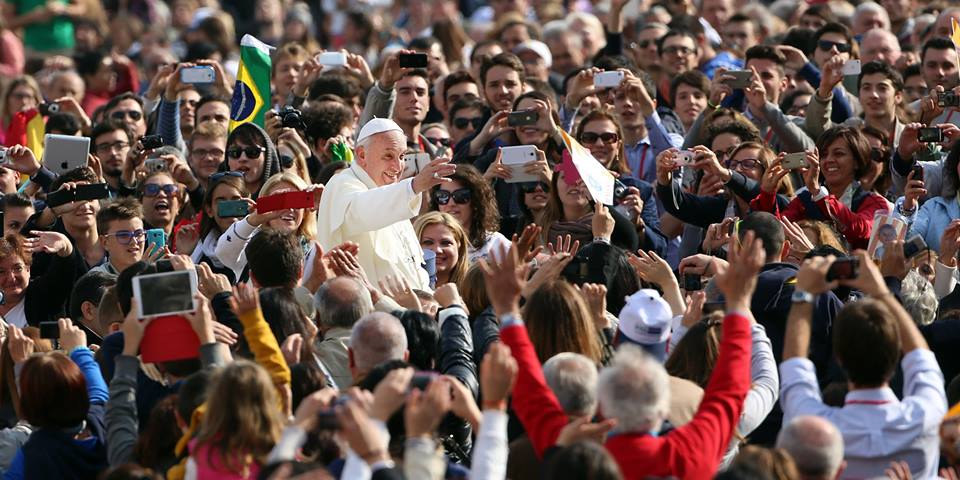

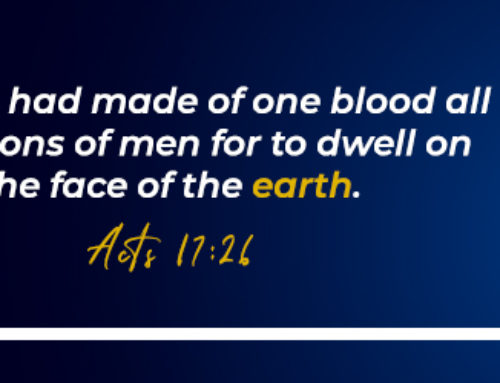
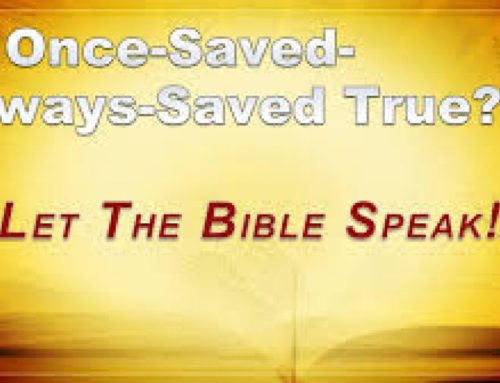

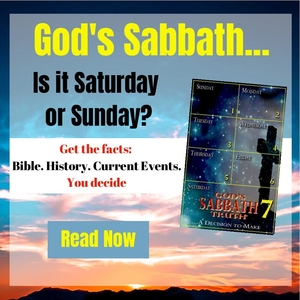

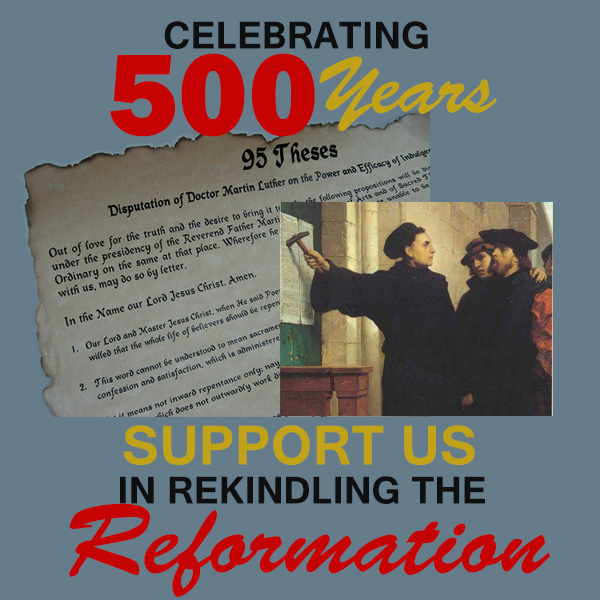

Leave A Comment